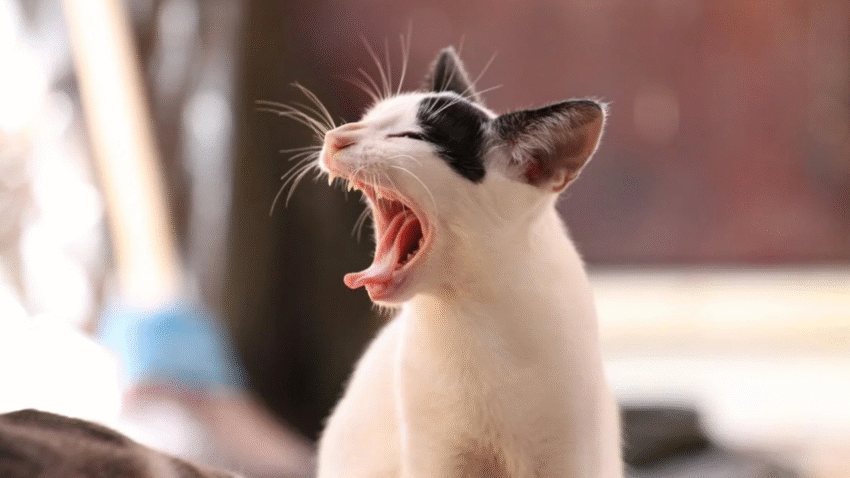Introduction
Is your cat constantly scratching or licking? Wondering how to keep your cat’s skin healthy and itch-free? Skin problems are common in cats, but with the right care and preventative habits, you can protect your feline’s comfort and well-being. In this guide, you’ll learn effective steps to maintain your cat’s skin health and reduce irritation naturally.
Why Skin Health Matters for Cats
A cat’s skin is their largest organ and their first line of defense against the environment. Healthy skin supports a glossy coat, regulates body temperature, and keeps infections at bay. When neglected, skin issues like dryness, flakiness, hot spots, and excessive scratching can develop—and lead to more serious problems.
Common skin concerns include:
- Dry or flaky skin
- Allergies
- Parasites (fleas, mites)
- Fungal or bacterial infections
- Overgrooming due to stress
Caring for your cat’s skin helps prevent discomfort, vet bills, and hair loss—and improves their overall health.
Step-by-Step Guide to Keeping Your Cat’s Skin Itch-Free
Step 1: Feed a High-Quality Diet
- Choose food rich in omega-3 and omega-6 fatty acids (from fish oils or flaxseed) to support skin hydration and reduce inflammation.
- Include protein-rich meals to strengthen skin and coat health.
- Avoid cheap fillers and artificial ingredients which can trigger allergies.
Tip: If your cat has food sensitivities, consult your vet about switching to a hypoallergenic or limited ingredient diet.
Step 2: Groom Regularly
- Brush your cat 2–3 times a week to remove loose fur, prevent mats, and stimulate natural skin oils.
- For long-haired breeds, use a slicker brush; for short-haired cats, a rubber grooming mitt or soft bristle brush works well.
- Grooming helps spot skin issues early—look for red spots, bald patches, or scabs.
Step 3: Keep Fleas and Parasites Away
- Use vet-approved flea prevention products monthly, even for indoor cats.
- Regularly check the base of the tail, behind the ears, and armpits—these are flea hotspots.
- Clean bedding and vacuum frequently to reduce flea eggs in the environment.
Tip: Flea allergy dermatitis is a common cause of itching—prevention is key.
Step 4: Moisturize with Natural Oils (When Needed)
- If your vet approves, apply a small amount of coconut oil or fish oil to dry patches.
- Never use essential oils or human lotions—many are toxic to cats.
- Use cat-specific moisturizing sprays if recommended by your vet.
Step 5: Reduce Stress in the Home
- Overgrooming or skin picking can be a sign of anxiety or boredom.
- Provide vertical space (like cat trees), window perches, and interactive toys.
- Use pheromone diffusers or sprays (like Feliway) to create a calm environment.
Step 6: Bathe Only When Necessary
- Most cats don’t need regular baths, but if your vet recommends it, use only cat-safe shampoo.
- Avoid over-bathing, which strips natural oils and causes dryness.
- Dry thoroughly after bathing and make sure your cat stays warm.
Common Mistakes to Avoid
1. Using Human Products
Never use human shampoos, moisturizers, or essential oils—they can irritate or poison your cat’s skin.
2. Ignoring Frequent Scratching
If your cat is constantly itching or licking, don’t wait it out. Persistent scratching can lead to open wounds and infections. Consult your vet.
3. Skipping Flea Prevention
Even indoor cats can get fleas from other pets or visitors. Missing a single dose can lead to a flea infestation and severe itching.
4. Overwashing
Too many baths can dry out your cat’s skin. Stick to spot cleaning unless advised by a vet.
5. Poor Diet
Cheap cat foods often lack essential fatty acids and can trigger food allergies. Always prioritize high-quality, protein-rich ingredients.
Extra Tips & Recommendations
- Add Omega Supplements: Ask your vet about adding fish oil capsules or omega-rich treats to boost skin moisture.
- Run a Humidifier: Especially in winter, dry air can irritate your cat’s skin. A humidifier helps maintain optimal skin hydration.
- Monitor for Allergies: Environmental allergens (dust, pollen, cleaning products) can cause flare-ups. Use unscented cleaners and hypoallergenic litter.
If your cat’s skin doesn’t improve or seems worse, schedule a vet visit to rule out infections, parasites, or chronic conditions like dermatitis or mange.
Conclusion
Keeping your cat’s skin healthy and itch-free doesn’t require fancy products—just good nutrition, grooming, flea prevention, and a little observation. By creating a routine and responding to signs early, you can help your cat stay comfortable, happy, and itch-free year-round. A well-cared-for coat is more than just beauty—it’s a reflection of great health.
